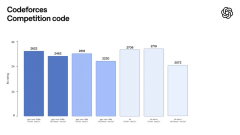Openai is making O3 level capabilities open source ahead of the release of GPT-5 in about two days. These open source models are trained for agentic workflows—supporting function calling, web search, Python execution, configurable reasoning effort, and full raw chain-of-thought access.
The gpt-oss-120b and gpt-oss-20b—two are state-of-the-art open-weight language models that deliver strong real-world performance at low cost. Available under the flexible Apache 2.0 license, these models outperform similarly sized open models on reasoning tasks, demonstrate strong tool use capabilities, and are optimized for efficient deployment on consumer hardware. They were trained using a mix of reinforcement learning and techniques informed by OpenAI’s most advanced internal models, including o3 and other frontier systems.
The gpt-oss-120b model achieves near-parity with OpenAI o4-mini on core reasoning benchmarks, while running efficiently on a single 80 GB GPU. The gpt-oss-20b model delivers similar results to OpenAI o3‑mini on common benchmarks and can run on edge devices with just 16 GB of memory, making it ideal for on-device use cases, local inference, or rapid iteration without costly infrastructure. Both models also perform strongly on tool use, few-shot function calling, CoT reasoning (as seen in results on the Tau-Bench agentic evaluation suite) and HealthBench (even outperforming proprietary models like OpenAI o1 and GPT‑4o).
We released two open-weight reasoning models—gpt-oss-





